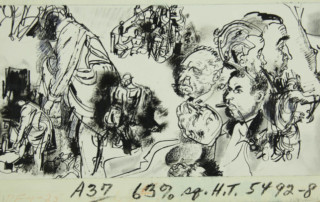We Eat First with Our Eyes
Food, an essential for man’s survival, is a common theme in art throughout the ages. Today, some epicureans consider food as an art form with its unique power to engage all the senses, not only vision. In the spirit of Thanksgiving, this blog looks at some of the mouthwatering imagery found in the Norman Rockwell Museum Collection.











